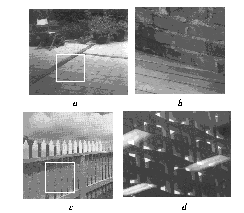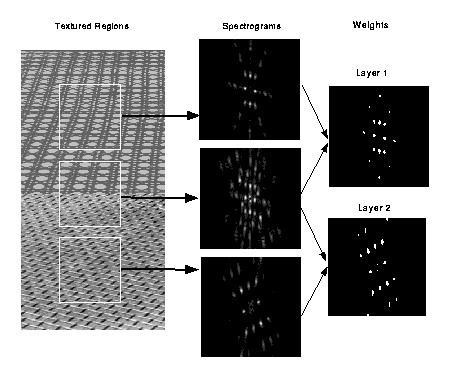
Shape-from-texture methods have typically made the assumption that only a single texture is present within the processing window. In this paper we explore the problem of estimating surface shape from texture in situations in which more than a single texture is present, due to texture discontinuities, pseudo-transparency (for example looking through a picket fence at a textured surface), or occlusion (see examples to the left). We present a theoretical analysis of the multiple texture problem. Making use of an analogy between shape-from-texture and motion, we relax the single texture assumption and exploit robust mixture model techniques from estimation of multiple motions to recover multiple surface shape estimates in the presence of multiple textured surfaces. The method performs well on real and synthetic images, with results comparable to those of shape from texture algorithms applied to only one texture.
